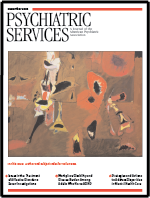Enter Sandman, Stephanie Williams's first novel, is both intriguing and maddening. The main character, Trisha Portman, is a young woman who comes from college to New York City and struggles to establish herself in the competitive art gallery and museum world. But the novel unfolds from this simple story line into so much more.
Stephanie Williams is an accomplished writer, a journalist by trade. She writes with intensity and passion. At times the reader wishes the hand of the editor had been stronger. One is asked to make leaps in logic and sequencing. The novel flows back and forth in space and time from college to Trisha Portman's life in New York City.
The descriptions of life in college evolve around the main character's relationships with her friends. Trisha's parents divorced with little familial concern for her. She has a number of relationships with young men and also develops a deep friendship with her female roommate, who becomes another important character. Along the way a man who lives down the hall becomes a haunting presence in her life. James, her lover's roommate, is attending college and has a substantial intellect. He is profoundly disfigured from a traumatic fire. He is reclusive, moody, and artistic. James's story and Trisha's story have parallel play; while in college, both find themselves alone in the dorm during the holidays. Trisha meets James's mother, a gifted painter who is dying of cancer. She is amazed to see the compassion and caring James and his mother share for each other. Trisha sees that James is more than an angry disabled young man and that he has amazing tenderness and caring, especially after Trisha goes though a cancer scare and a biopsy that proves negative. They completely lose touch with one other after college ends, until a mysterious painting is forwarded to Trisha in her new job at a prestigious art gallery.
The story shifts, with some improbable meetings and events. Although some events challenge the reader, it is possible to stay with Trisha's character on her journey. The surprises in the novel are many. James returns to the narrative, and one is struck by the complexity of his apparent internal deadness. Trisha's plight and the manner in which she handles herself all keep the reader's interest. Many of the descriptions of life in New York and the milieu of the young professional New Yorker feel very accurate.
Without giving away the story, I will say that this novel transforms into a touching description of life lived and life taken too soon. The novel speaks directly about the kinds of transformations that occur when one life leaves this world and is touched by another. The novel moves effortlessly to describe the communications that occur when one dying person asks another to bear witness, to stand by them and accompany them to the moment when life is no longer. The helper is then transformed and lives anew. The wounded helper becomes somehow more alive.
Health care professionals will be reminded of the ways in which bearing witness to the suffering of others can bring healing to the care provider. The author does a remarkable job describing states of illness, helplessness, fear, and the desire to let go. These descriptions are gifts to the reader. This book appears to be improbable when one starts reading and then takes the reader to a deep place of connection, love, and transformation. Working in health care can also have just such an effect. You really do not know what a patient may bring to you, what amazing gift and story individual might relay to you. Stephanie Williams has given us a fine first novel. I hope the Sandman has been kind and generous to her.

